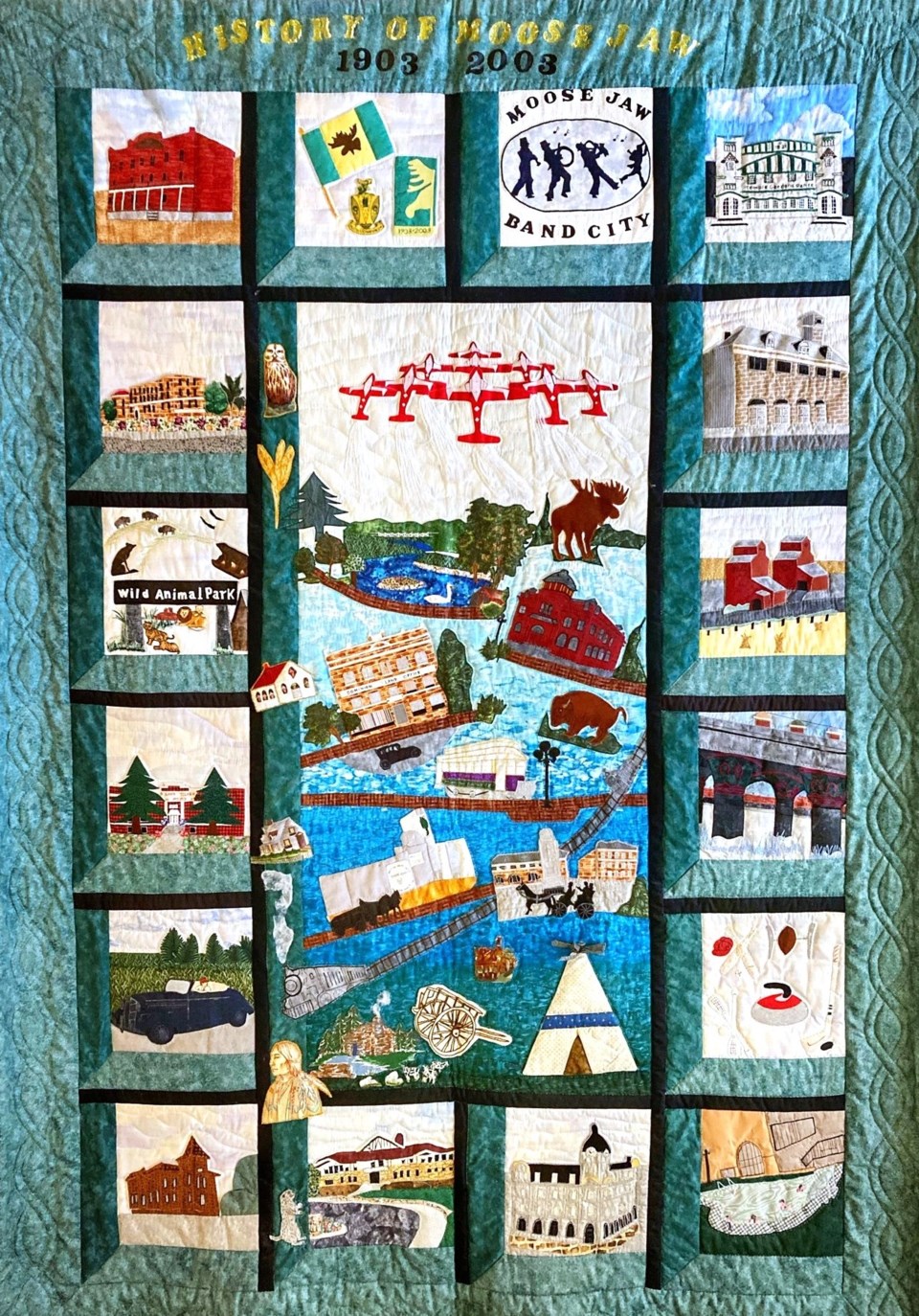MOOSE JAW — While colourful creativity filled the Temple Gardens Centre during the Prairie Hearts Quilters Guild’s recent “Think Outside the Block” biennial quilting show, another remarkable quilt quietly continued to tell its own story in the lobby of the Western Development Museum (WDM) in Moose Jaw.
Titled “History of Moose Jaw in Stitches, 1903 - 2003,” the heritage quilt is a vibrant tribute to a century of local stories, stitched together by seven members of the Prairie Hearts Quilters Guild: Joan Tanner, Marj Nicolle, Dorothy McFadden, Edna Mowchenko, Marg Walker, Jean Henry, and Loraine Ramage.
The quilt was envisioned as a reflection of Moose Jaw itself — a city whose character, like a patchwork, is shaped by many distinct but interconnected pieces.
Over six months of careful hand quilting, these women crafted more than just a textile artwork — they pieced together a visual narrative of the city’s evolution.
Each panel of the quilt nods to a landmark, a memory, or a moment in time. From the arrival of the first homesteaders and the Canadian Pacific Railway to the introduction of streetcars in 1910 and the enduring beauty of Crescent Park, the quilt threads history into fabric. It captures the memory of local sports traditions, civic buildings such as City Hall and the old firehall at William Milne Place, and long-gone gems like the Wild Animal Park and the original Temple Gardens Dance Hall, where Moose Javians once danced the night away.
The quilt includes details such as the Fourth Avenue Bridge, erected in 1929, whose 84 iconic pillars are captured in four striking red and dark gray columns.
Recreation has long been a cornerstone of community life in Moose Jaw. Once dubbed the Band Capital of the World, the city’s lively spirit has been reflected in a Band City logo, a vintage automobile, and a block containing a curling stone, baseball bats, a football, and hockey and lacrosse sticks.
The quilt pays tribute to many of Moose Jaw’s defining landmarks, including the historic Robin Hood Mill — established in 1909 when Moose Jaw was the largest city in the province with 7,000 residents — churches, schools, Mac the Moose, and the Natatorium Swimming Complex. Also stitched into its panels are more recent icons, such as the world-famous Snowbirds, Billie Blaze the Bison created by local metal artist Bill Keen and featured at the Tourism Moose Jaw kiosk, and the Temple Gardens Mineral Spa.
Now housed at the WDM after being moved from its previous home in an upstairs meeting room at the Moose Jaw Public Library, “History of Moose Jaw in Stitches” gently underscores the timeless role quilting can play in preserving memories, honouring milestones, and weaving together the threads of a community’s identity.
To learn more about the Prairie Hearts Quilters Guild, visit PrairieHeartsQuilters.com or find “Moose Jaw Prairie Hearts Quilters Guild” on Facebook.
The Western Development Museum in Moose Jaw is located at 50 Diefenbaker Drive.




